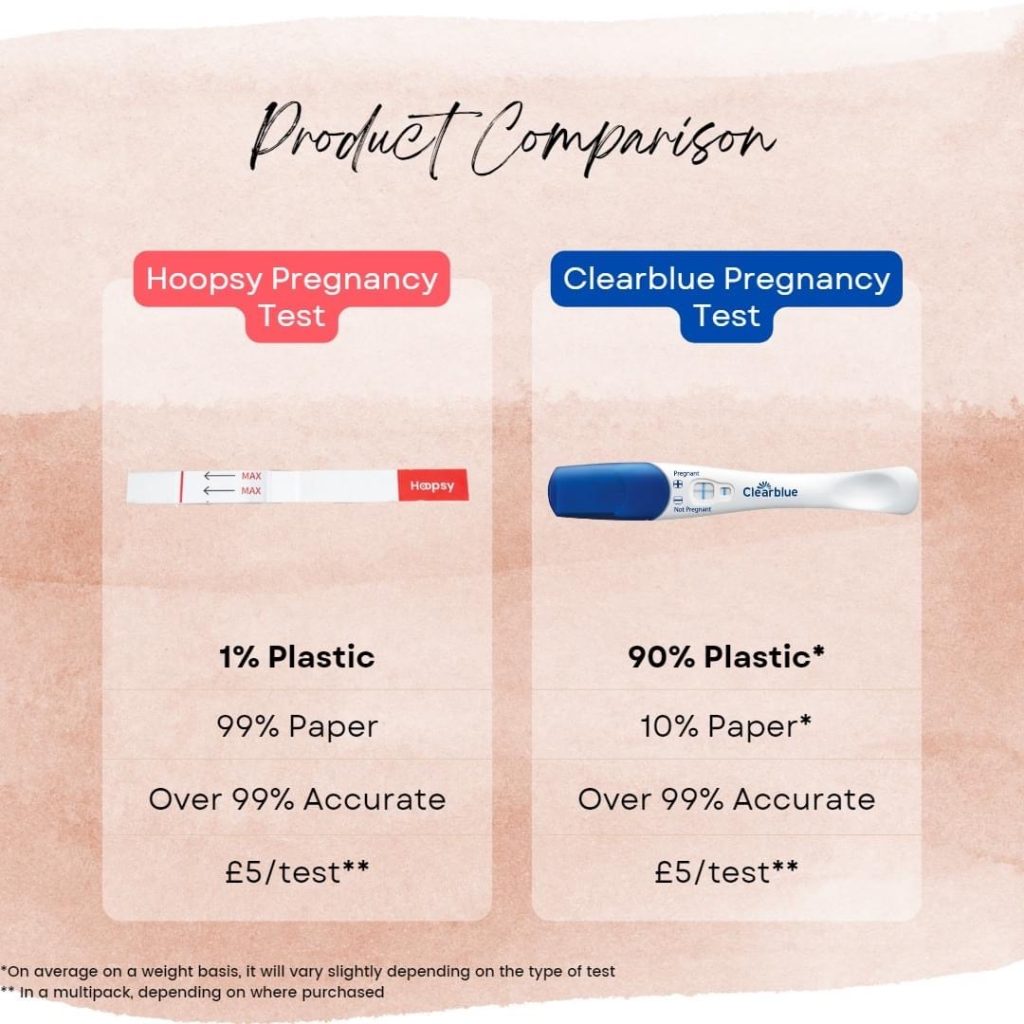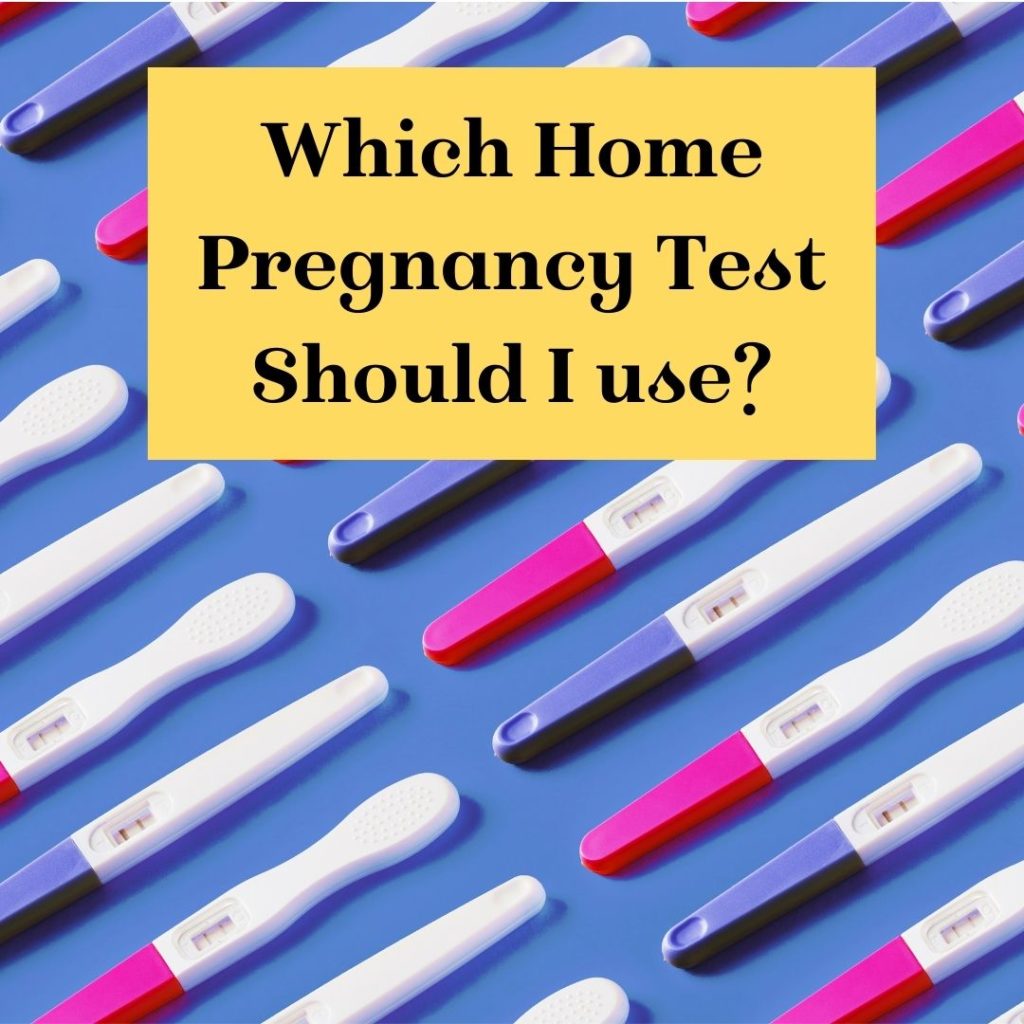If you are trying to conceive, have missed a period or have noticed any signs or symptoms of early pregnancy. You might be considering taking a home pregnancy test. It’s easy to see from a quick google search that the choice available is a little overwhelming. Why is there so much choice, and ultimately what is the difference? Do you need an early detection test? A simple hCG test? Or should you go all out and request a blood test instead?!
If you are wondering how pregnancy tests work and if they are all the same, we’ve put together this handy guide that covers everything you need to know about home pregnancy tests and hopefully help you make the right choice for you when you next need to make a purchase.
What is a home pregnancy test for?
Ok, let’s start with the basics so no one is confused. A home pregnancy test is designed to detect Human chorionic gonadotropin, or the hCG hormone, as it is more widely called, in your urine or blood. High levels of hCG indicate pregnancy.
Pregnancy tests that you use to test your urine at home are generally inexpensive and pretty accurate, so they are a hugely popular choice to find out if you are expecting.
How do pregnancy tests work?
It’s baffling to think that the simple act of peeing on a stick can tell you if you are or are not pregnant, isn’t it? But that is what a home pregnancy test is designed to do in it’s most basic capacity.
By either weeing on the stick mid-flow or by dipping the pregnancy test in a collected urine sample, the test will be able to detect the level of hCG present. The fertilised embryo secretes the hCG hormone once it has implanted in the uterus around 8-10 days after ovulation. After this time, the level of hCG in your body will increase rapidly.
If you take a test too early, there’s a chance you might not have enough hCG present to give a positive result. The hormone takes time to build up in your body, and as it builds up, you have a greater chance of getting a positive pregnancy test the longer you wait. This is why most tests give a lower accuracy if you choose to test early. Most tests recommend you take a pregnancy test from the first day of your missed period.
How accurate are home pregnancy tests?
Pregnancy tests you can take at home are highly accurate. Many offer accuracy of up to 99% when you test from the day of your missed period. So if you get a positive result, you can be pretty confident it’s right.
However, you should also remember that if a test is taken either too early or without following the instructions, it’s entirely possible to get an inaccurate result. False negatives are by far the most common complaint when it comes to the accuracy of home pregnancy tests.
False positive pregnancy tests are extremely rare, but they do happen occasionally. They are most common when a test is taken too soon after some fertility drugs that contain the hCG hormone. False positives can also occur if someone has suffered a very early miscarriage.
But, assuming a test is taken correctly and left to develop for the time suggested by the test manufacturer, they are extremely reliable.
How to take a home pregnancy test
There are three ways to take a home pregnancy test:
- Place the pregnancy test strip in your urine stream whilst you wee. This is a mid-stream test).
- Pee into a clean cup. Then put a few drops of urine on a chemical strip.
- Pee in a clean cup, and dip the test strip in whilst it’s still in the cup. Watch Lara’s video on how this works here.
You can also be tested for pregnancy via a blood test. But these are rarer because they are an expensive alternative to urine tests. Your healthcare provider must arrange a blood test, typically only offering this in certain circumstances. A blood test is more sensitive than urine tests and is generally only used when a problem is suspected, or an individual is undergoing fertility treatment. If you need a blood test to confirm your pregnancy, this could take anywhere from a few hours to a few days because the sample will need to be analysed in a lab. By comparison, the results of a urine pregnancy test will be available within minutes.
When to take a pregnancy test?
For most women, the hCG hormone can be detected around ten days after conception. When you take the test too early, you risk getting a false negative result. A missed period usually happens around 14 days after conception.
Here are a few handy tips to remember when taking any home pregnancy test:
- Although a pregnancy test can be taken at any time of day, it’s always advisable to take the test with your first-morning wee. This is because, in the morning, hCG levels are at their most concentrated. If you need to test later in the day, make sure there has been pee in your bladder for at least a couple of hours, so it’s not too diluted!
- Likewise, do not drink excessive amounts of water before taking a test. This can dilute or thin down the amount of hCG.
- Read the instructions carefully. Yes, many pregnancy tests work similarly, but you need to make sure you follow each step for the most accurate result!
- Check your pregnancy test hasn’t expired.
How quickly can I get a result?
After taking a home pregnancy test, the results will usually be available within five minutes. This can vary depending on which brand you choose, but generally, it’s a very short wait. Always make sure you read the instructions carefully. Also, if you wait too long to check the results, it might be inaccurate, and the test should be repeated!
When reading the result, even a faint line can indicate a positive result. Most tests also have a control line which tells you that you have done the test correctly. As ever, make sure you read the test instructions to ensure you know which line is which. (Tip the control panel is typically on the right side). If the control line doesn’t appear, something has gone wrong. You should refer to the manufacturer’s instructions and repeat the test.
Which home pregnancy test should I choose?
As with many things in life, your choice of pregnancy test will likely come down to personal preference. If you are looking to test early, look for a test which states that you can take it before your missed period. For example, the Hoopsy eco pregnancy test has an hCG sensitivity of 25mIU/ml. This means it will be at least 95% accurate if taken up to five days early.
We also think it’s worth considering a pregnancy test’s eco-friendliness when purchasing. The market leaders in the pregnancy test industry are still made predominantly of plastic. However, eco-friendly alternatives are now available, like the Hoopsy eco pregnancy test, which is made of 99% paper and is 50% recyclable. Plastic pregnancy tests cannot be recycled and take an average of 20-30 years to break down in a landfill. Whereas a paper test that works exactly the same way as the plastic alternatives will break down in a matter of months and is much kinder to the environment.
We also think it’s worth considering a pregnancy test’s eco-friendliness when purchasing. The market leaders in the pregnancy test industry are still made predominantly of plastic. However, eco-friendly alternatives are now available, like the Hoopsy eco pregnancy test, which is made of 99% paper and is 50% recyclable. Plastic pregnancy tests cannot be recycled and take an average of 20-30 years to break down in a landfill. Whereas a paper test that works exactly the same way as the plastic alternatives will break down in a matter of months and is much kinder to the environment.
Here’s a quick comparison between Hoopsy’s eco-pregnancy test and one of the leading brands:

Can medications affect pregnancy test results?
Generally, medications, including painkillers, antibiotics or alcohol, won’t impact the results of any pregnancy test.
The only exception is some fertility drugs. These can sometimes cause a false-positive result. If you are taking any fertility medication, please speak to your fertility specialist for advice to ensure you get the most accurate results.
What should I do if I get a positive pregnancy test result?
Firstly, congratulations! If your pregnancy test is positive, likely, you are indeed pregnant. The first thing you should do, after telling your nearest and dearest and doing a happy dance, is to make an appointment with your GP to get the ball rolling on your antenatal care.
Also, if you haven’t started already, start taking prenatal vitamins, and choose one that contains folic acid. Folic acid can help prevent complications during fetal development, so if you are trying to conceive, we highly recommend taking these even before getting a positive result. You might also want to consider making a few changes to support your health, such as cutting out alcohol, stopping smoking or limiting your caffeine intake.
Final word
We hope the above has given you all the information you need about taking a home pregnancy test and how they work. Home pregnancy tests allow women to find out if they are pregnant from the comfort of their homes. When taken correctly, most home pregnancy tests are at least 99% accurate when taken from the first day of your missed period. Hoopsy’s eco pregnancy test is a mid-stream test which is over 99% accurate and made from 99% paper. If you have any questions about our pregnancy test or anything else, please get in touch or leave a comment below!




